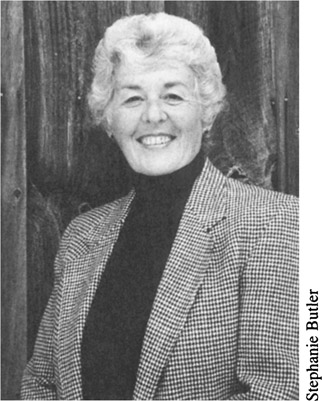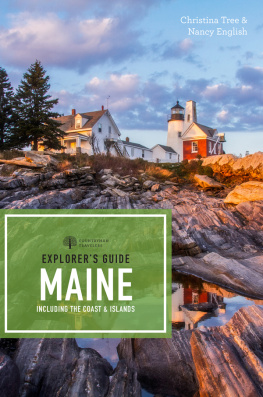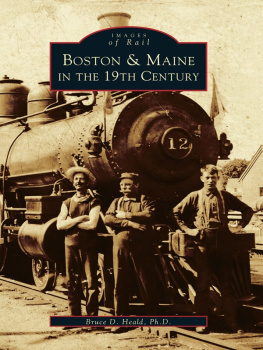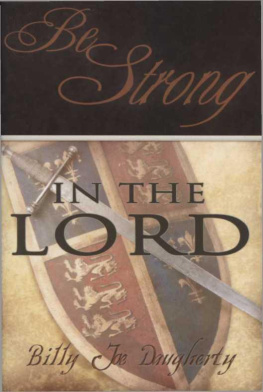About the Author

Author of six books and a contributor to eight others, Joyce Butler has also written numerous articles for newspapers, magazines, and scholarly publications such as the Maine Historical Society Quarterly, Boston Universitys Dublin Seminar for New England Folklife Annual Proceedings, and The Log of Mystic Seaport. From 1980 to 1995 she was Curator of Manuscripts and Exhibitions at The Brick Store Museum, Kennebunk, where she narrated The 47 Fire, a video published by the Museum. Currently she is Curator of Museum Collections at Maine Historical Societys Center for Maine History, Portland. A founding member of the Society of Maine Archivists, she has been an advisor and lecturer for many of Maines historical and educational organizations and is a recipient of a Certificate of Commendation from the American Association for State and Local History.
A Maine native, Mrs. Butler lives in Kennebunk, where she has served as Town Historian since 1990. She was named Citizen of the Year by the Kennebunk/Kennebunkport Chamber of Commerce in 1993. Each year, a graduating senior at Kennebunk High School is selected to receive The Brick Store Museums Joyce Butler History Award for excellence in history.
WILDFIRE LOOSE:
THE WEEK MAINE BURNED
Also by Joyce Butler:
Pages from a Journal
Kennebunkport Scrapbook, Volume I and II
A Kennebunkport Album
The Duchess Who Lived in the Mansion (Juvenile)
Contributor:
Agreeable Situations: Society, Commerce, and Art in Southern Maine, 1790-1830
Maine in the Early Republic: From Revolution to Statehood
A Passionate Intensity: The Life and Work of Dorothy Healy
Maine: The Pine Tree State from Prehistory to the Present
Sketch o f an Old River
Published by Down East Books
A wholly owned subsidiary of The Rowman & Littlefield Publishing Group, Inc.
4501 Forbes Boulevard, Suite 200, Lanham, Maryland 20706
www.rowman.com
16 Carlisle Street, London W1D 3BT, United Kingdom
Distributed by NATIONAL BOOK NETWORK
Copyright 1979, 1987, 1997 by Joyce Butler
The 2014 edition of Wildfire Loose is an unabridged republication of the third edition published in Camden, Maine, in 1997 by Down East Books.
All rights reserved. No part of this book may be reproduced in any form or by any electronic or mechanical means, including information storage and retrieval systems, without written permission from the publisher, except by a reviewer who may quote passages in a review.
British Library Cataloguing in Publication Information Available
Library of Congress Cataloging-in-Publication Data
The third edition of this book was previously catalogued by the Library of Congress as follows:
Butler, Joyce.
Wildfire loose : the week Maine burned / Joyce Butler. Third edition.
xxi, 278 p. : ill., maps ; 23 cm.
New 50th anniversary editionCover.
Includes bibliographical references (p. 255-261) and index.
1. WildfiresMaineHistory. 2. Forest firesMaineHistory. 3. Great Fire, Maine,1947. I. Title.
SD421.32.M2 B87 1997
97065236
ISBN 978-1-60893-296-2 (pbk. : alk. paper)ISBN 978-1-60893-270-2 (electronic)
 The paper used in this publication meets the minimum requirements of American National Standard for Information SciencesPermanence of Paper for Printed Library Materials, ANSI/NISO Z39.48-1992.
The paper used in this publication meets the minimum requirements of American National Standard for Information SciencesPermanence of Paper for Printed Library Materials, ANSI/NISO Z39.48-1992.
Printed in the United States of America
This book is for those who will read it and remember.
Acknowledgments
The 1947 forest fires touched the lives of Maine people, even those who were not directly involved.
I was a schoolgirl living in Portland in 1947. My involvement with the fires was minor, and yet they made a strong impression on me. My older brother went off to serve as a firefighter. I remember he would be gone two or three days at a time and would come homeonce in the middle of the nightblack with soot, exhausted, to fall into bed to sleep for a few hours before going out again. At school in home economics class we made sandwiches for the firefighters, and I remember the day the Maine State Pier in Portland caught fire. I stood on the lawn in front of my house that morning. There were no cars going by on the road, the air was veiled with smoke, and I felt a strange sense of doom. Doom is not too strong a word. Everyone had been talking about the fires that were burning all over the state, and I thought, Now there is a fire in Portland. Maybe the whole city will burn. It seemed possible to me that the fires would spread and spread until the whole state of Maine was burning. Others have told me that they had the same thoughts.
Many have told me how they went out on their lawns at night to see the red glow in the sky over some distant town, and how incredible it seemed that houseswhole villageswere burning. Those who lived in the houses and the villages have told me that what was happening seemed unreal. It was like a bad dream, they have said.
What happened in the fall of 1947 is an important part of Maines history. For that reason, when I was asked to write this book, I accepted readily. It was, I believed, a story that should be preserved for future generations. It was important to gather the facts before it was too late.
When I began my research I found that it was already almost too late. Many of the key men who fought the fires, and knew how they traveled and were stopped, were dead. Reports that were written after the fires had either not been preserved or were buried in poorly stored back files. Most of the excellent pictures that were taken at the time had disappeared. I found that published accounts of the fires needed to be carefully checked for misinformation: fact was often mixed with exaggeration and rumor.
I also discovered that although the fires are remembered vividly by many people, a careful, day-by-day accounting of just what happened cannot depend on thirty-year-old memories, and that, as one man said to me, The 47 fire is like politics and religionnobodys got the same story. For this reason, newspaper accounts have been vitally important in the writing of this book. Luckily, the key newspapers that followed the firesthe Portland Press Herald and Sunday Telegram , the Biddeford Daily Journal , and the Bangor Daily News have been preserved on microfilm. If this were not the case, this book could not have been written, for only by reading them could I learn the chronology of the fires. I cannot express too strongly my debt to this source of information.
I also wish to acknowledge my debt to the reporters from these newspapers, and others, who visited each fire area. Their eye for details and their sensitivity in interviewing people on the scene is largely responsible for any sense of immediacy this book has.
I also wish to express my deep appreciation to the people who were willing to share with me, and allow me to tell, their very personal stories. They have made it possible for me to bring the effect of the fires down to a human level, to show what the fires meant in terms of peoples lives. I have been impressed with their storytelling ability, and I believe the reader will be moved, as I was, by the drama, poetry, humor, and philosophy in the accounts of Christine Rowell, Dorothy Stanley, Esther Boynton, John Kelley, Arthur Roberts, Cliff Seavey, Mabel Emery, Frank Handlen, Allen Salisbury, Bessie Ricker, and others. These people epitomize, I believe, the strength, common sense, good humor, morality, and sensitivity of people who have been nurtured by strong traditions. Such people are not unique to Maine, but it does seem that many of them have their roots here.









 The paper used in this publication meets the minimum requirements of American National Standard for Information SciencesPermanence of Paper for Printed Library Materials, ANSI/NISO Z39.48-1992.
The paper used in this publication meets the minimum requirements of American National Standard for Information SciencesPermanence of Paper for Printed Library Materials, ANSI/NISO Z39.48-1992.